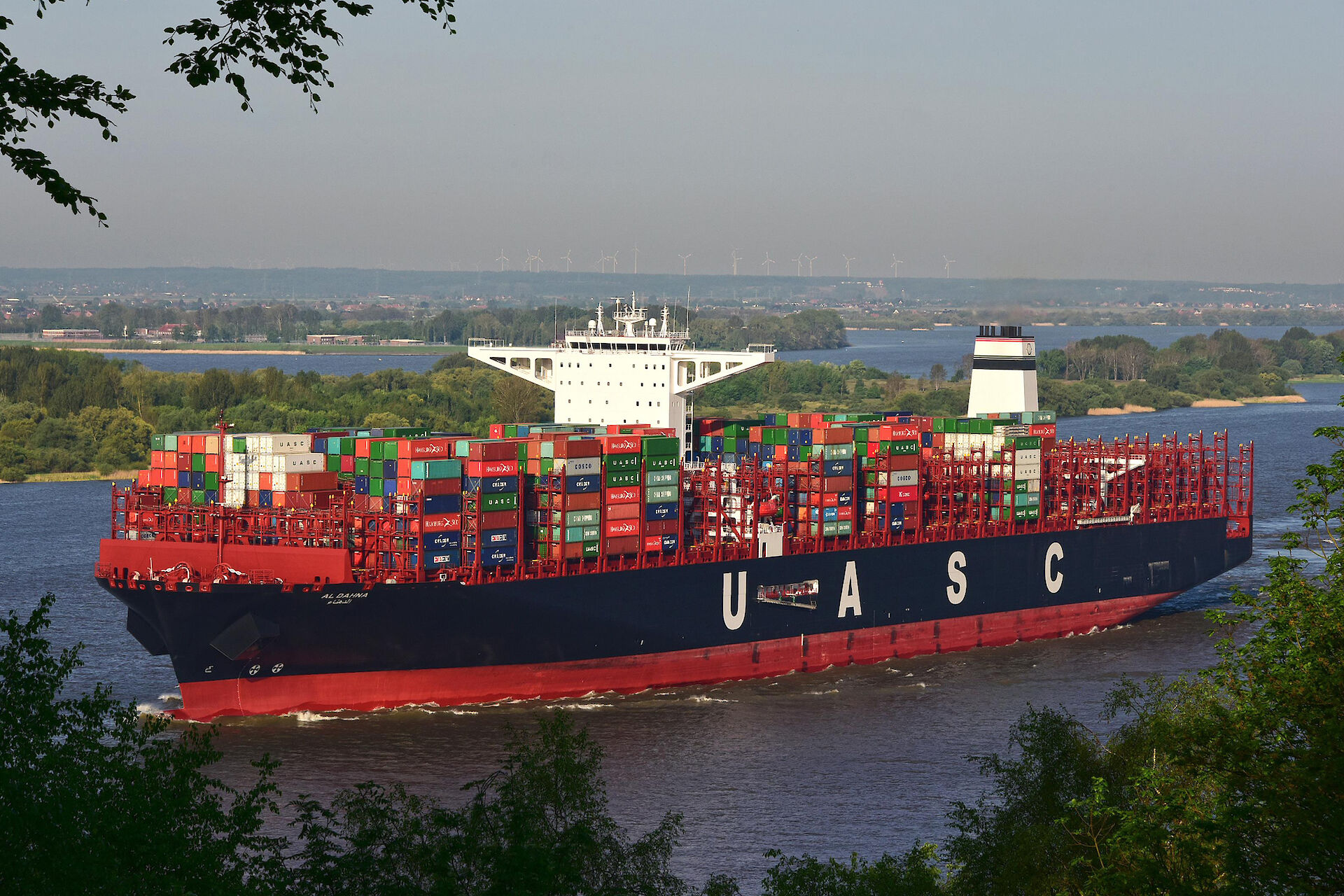

19 May 2016 10:05 Economy
Total throughput for the Port of Hamburg in the first quarter of 2016 was 2.5 percent lower at 34.8 million tons. First noticeable early in the second half of 2015, the economic downturn in China and Russia, both especially important markets for Hamburg, may have slowed somewhat during the first quarter of 2016 – yet Hamburg’s seaborne cargo throughput remained below the previous year’s record level. Contributing to the total were bulk cargo throughput at 11.5 million tons (down 1.9 percent) and general cargo throughput at 23.3 million tons (down 2.7 percent), both segments being somewhat weaker than in the same quarter of 2015. At 2.2 million TEU (down 3.4 percent) container throughput for the quarter was also lower.
The first-quarter total for seaborne cargo throughput was shaped especially by lower container traffic with China, the Port of Hamburg’s most important trading partner by a wide margin. Down 8.0 percent at 651,000 TEU, container traffic with China was 57,000 TEU lower than in the previous year, and as the largest volume fall affected the global total. Gratifying double-digit and single-digit growth rates in container traffic with Finland (up 11.1 percent), the USA (up 14.2 percent), Malaysia (up 6.4 percent), the United Kingdom (up 31.8 percent) and India (up 4.1 percent), all of them among the Port of Hamburg’s Top Ten trading partners, were not sufficient to restore the previous total. “Taken together, the downturns for the Top Three trading partners, China (down 8.0 percent), Singapore (down 7.6 percent) and Russia (down 4.9 percent) constituted the main factor affecting our result on container handling. We saw the onset of stabilization occurring during the first quarter and are assuming that the volume downturn in container traffic with China and Russia has bottomed out, with both countries remaining core markets for the Port of Hamburg. A few weeks ago, we discerned positive signals from the Russian economy at TransRussia, while showcasing at the largest Russian logistics trade fair and during the numerous information functions and discussions with representatives of firms and the world of politics. Even in tough times, for Russia the Port of Hamburg remains an essential international trade hub,” said Axel Mattern, CEO of Port of Hamburg Marketing (HHM), at its quarterly press conference.
In 2016 China too remains a market region being intensively cultivated by Port of Hamburg Marketing and its Representative Offices in Hong Kong and Shanghai. In addition to Shanghai, in mid-June a port business delegation including representatives of BUSS Port Logistics, Brunsbüttel Ports, TCO Transcargo and HPA Hamburg Port Authority will be visiting Ningbo, Tianjin and Beijing. Along with discussions with Chinese representatives of leading import and export companies, specialized talks are also firmly planned with Chinese ports and transport companies, as well as trade associations and government agencies, as part of the program for the trading centres on the itinerary. In Shanghai, the members of the Port of Hamburg delegation will be running a Logistics Workshop for their Chinese port customers and partners. As a networking event, they will also be inviting them to a Port of Hamburg VIP Dinner. A visit to the “transport logistic China” trade fair is also planned.
At 2.2 million TEU, first-quarter container throughput remained slightly below the previous year’s, being down by 78,000 TEU, or 3.4 percent. This was primarily due to the slow start to container traffic with China and Russia early in the year. The first three months, for instance, brought cancellation of some sailings on container liner services on the East Asia trade route owing to cargo space over-capacity, and complete withdrawal of one liner service. Besides Hamburg, other ports were affected. Fortunately, in the course of the first quarter Hamburg also received new liner services. For a start, MAERSK shipping line’s Colombia fruit service now links the Colombian ports of Turbo and Santa Maria with the HHLA Frucht- and Kühl-Zentrum at O’Swaldkai multi-purpose terminal, while HDS/IRISL’s new ECL container service links Hamburg with the ports of Genoa, Istanbul, Port Said and Bandar Abbas every two weeks. Since Iran is seeing pent-up demand for investment goods for its oil, automotive, chemical and energy sectors following the trade restrictions of recent years, Axel Mattern and his Executive Board colleague Ingo Egloff are assuming that Hamburg with its traditionally excellent relations with Iran will again be of growing significance as the Northern European transhipment location for cargo to and from Iran.
Dredging of the navigation channel and the expansion and modernization of transport infrastructure are of immense importance for Hamburg’s further development as Germany’s leading port and logistics location in. Fit-for-purpose transport links constitute truly vital arteries for global foreign trade.
Megacarrier Al Dahna, first call at PORT OF HAMBURG